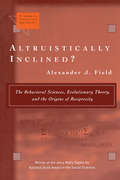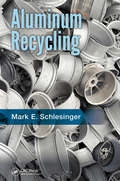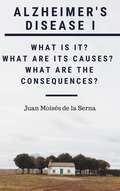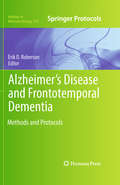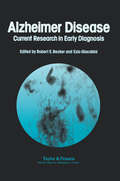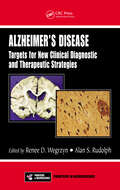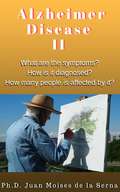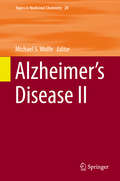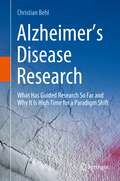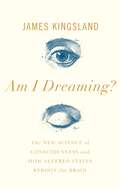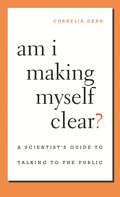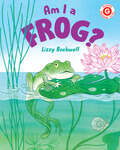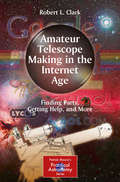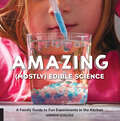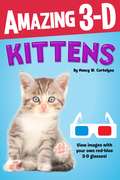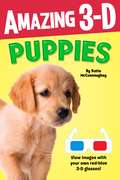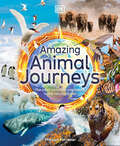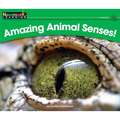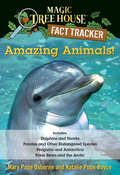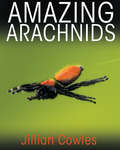- Table View
- List View
Altruistically Inclined?: The Behavioral Sciences, Evolutionary Theory, and the Origins of Reciprocity
by Alexander J. FieldAlexander J. Field is the Michel and Mary Orradre Professor of Economics at Santa Clara University.
Aluminum Recycling
by Mark E. SchlesingerWhat makes this book unique is a specific focus on aluminum recovery, rather than just recycling in general. It also offers an integrated discussion of scrap recovery and re-melting operations and includes economic as well as technical elements of recycling. Important topics include a discussion of the scrap aluminum marketplace and how secondary a
Always Inventing: A Photobiography of Alexander Graham Bell
by Tom L. MatthewsNational Geographic Children's Books presents the award-winning photobiography of Alexander Graham Bell. This fascinating profile, named a School Library Journal Best Book of the Year, uses direct quotes to give readers a vivid insight into the life of a prolific inventor, driven to succeed.
Alzheimer's Disease I
by Juan Moises de la Serna Adriana Ethel AllendeWhat is it, what are its causes, what consequences does it entail? Discover all the answers to Alzheimer's disease. Alzheimer's is a disease that has increased in terms of the number of cases affected in recent years, which in turn has caused many questions to arise when a person or a family member receives the diagnosis, such as, what Alzheimer's is, what its origin is, if there is a treatment, how the disease evolves, what the consequences in everyday life are, what the psychological effects on the patient are, if it can be overcome, if it is transmitted to children. This opens up a whole collection of issues to deal with in order to calm the uncertainty felt when getting to know that one suffers from a disease that is increasingly "common" and widespread, and of which little is known about the latest scientific advances in this area, due in large part to the complexity of the technical language used, but also because these advances usually reach only specialists through meetings and congresses where this type of information is shared.
Alzheimer's Disease and Frontotemporal Dementia: Methods and Protocols (Methods in Molecular Biology #670)
by Erik D. RobersonAlzheimer's disease and frontotemporal dementia, two of the most prevalent neurodegenerative diseases, are dreaded disorders that attack the neural networks underlying memory and personality, systems that make us who we are. Major breakthroughs in recent years have spurred new research approaches to these conditions. In Alzheimer's Disease and Frontotemporal Dementia: Methods and Protocols, expert investigators bring together the many divergent areas of expertise used to study these diseases, including behavior, electrophysiology, confocal microscopy, and hardcore biochemistry. Beginning with an overview of the two diseases and contemporary research on them, the book continues with specialized protocols for working with amyloid-β peptide, tau, and apolipoprotein E as well as experimental systems for studying AD and FTD, including cell and animal models, and outcome measures that can be used to assess neuronal function in these systems. Written in the highly successful Methods in Molecular BiologyTM series format, chapters include brief introductions to their respective topics, lists of the necessary materials and reagents, step-by-step, readily reproducible laboratory protocols, and notes on troubleshooting and avoiding known pitfalls. Authoritative and easy to use, Alzheimer's Disease and Frontotemporal Dementia: Methods and Protocols serves as an ideal guide for all scientists pursuing the cause and cure of these widespread and nightmarishly debilitating disorders.
Alzheimer's Disease: Current Research In Early Diagnosis
by Robert E. Becker; Ezio GiacobiniThis book examines the relevance of current research for the early diagnosis of Alzheimer disease. It uncovers the present lack of clinical utility in research methodologies such as neuroimaging, drug challenges, electroencephalographs studies, and brain biopsy.
Alzheimer's Disease: Targets for New Clinical Diagnostic and Therapeutic Strategies (Frontiers in Neuroscience)
by Renee D. Wegrzyn Alan S. RudolphIn recent years, a tremendous amount of effort has been focused on better understanding the fundamentals of Alzheimer's disease (AD) to facilitate early and accurate diagnosis and appropriately targeted therapeutic treatments. Alzheimer's Disease: Targets for New Clinical, Diagnostic, and Therapeutic Strategies provides a detailed synopsis of the c
Alzheimer´s Disease II
by Juan Moises de la Serna Jacqueline M. NuñezWhat are the symptoms? How is it diagnosed? How many people is affected by it? Learn the latest research about the disease of Alzheimer Every day there are new discoveries about the disease of Alzheimer, but these usually are available for specialists and academics in the topic. This book aims to resolve this problem and show the latest advances about the disease of Alzheimer. Objective: The objective of the e-book is to serve as a first approximation to those people that have in themselves or in their families, the disease of Alzheimer. This book tries to show in a clear way, the results of the latest research about the disease of Alzheimer, and with it , to answer to the most relevant questions, what are the symptoms? How is it diagnosed? And how many people is affected by it? Recipients: -Professionals from the health system that have to, or want to learn more about the diagnosis and treatment of the Alzheimer´s disease. -Professors that want to offer updated information to their students, about the Alzheimer´s disease -To any person that has received the diagnosis of Alzheimer´s disease and their families, for them to know what to do in light of this disease. Topic Following there will be a detailed explanation about each of the principal topics of this piece: -Symptoms of Alzheimer: The families usually are the first ones to notice the symptoms associated with this disease, but for this they should be well informed of which these are. -Alzheimer´s disease: Once the first symptoms have been detected, is adequate to get in touch with an specialist to determine which is the best way to intervene. -Extension of the Alzheimer: Although the number is not the important, since each case is important because is the life of a person, the big numbers inform how this disease is spreading worldwide.
Alzheimer’s Disease II (Topics in Medicinal Chemistry #24)
by Michael S. WolfeMedicinal chemistry is both science and art. The science of medicinal chemistry offers mankind one of its best hopes for improving the quality of life. The art of medicinal chemistry continues to challenge its practitioners with the need for both intuition and experience to discover new drugs. Hence sharing the experience of drug research is uniquely beneficial to the field of medicinal chemistry. Drug research requires interdisciplinary team-work at the interface between chemistry, biology and medicine. Therefore, the topic-related series Topics in Medicinal Chemistry covers all relevant aspects of drug research, e. g. pathobiochemistry of diseases, identification and validation of (emerging) drug targets, structural biology, drugability of targets, drug design approaches, chemogenomics, synthetic chemistry including combinatorial methods, bioorganic chemistry, natural compounds, high-throughput screening, pharmacological in vitro and in vivo investigations, drug-receptor interactions on the molecular level, structure-activity relationships, drug absorption, distribution, metabolism, elimination, toxicology and pharmacogenomics. In general, special volumes are edited by well known guest editors
Alzheimer’s Disease Research: What Has Guided Research So Far and Why It Is High Time for a Paradigm Shift
by Christian BehlThis book highlights the key phases and central findings of Alzheimer’s Disease research since the introduction of the label ‘Alzheimer’s Disease’ in 1910. The author, Christian Behl, puts dementia research in the context of the respective zeitgeist and summarizes the paths that have led to the currently available Alzheimer’s drugs. As the reader is taken through the major developments in Alzheimer's Disease research, particularly over the past thirty years, Behl poses critical questions: Why are the exact causes of Alzheimer's Disease still in the dark, despite all the immense, worldwide research efforts in academia as well as in the pharmaceutical industry? Why has the majority of an entire research field kept focusing on a single hypothesis that establishes the deposition of the amyloid beta peptide in the brain as the key trigger of Alzheimer's pathology, even though this concept has still not been convincingly proven in the clinics? Are there other hypotheses that might explain the pathogenesis of this complex brain disease, and if so, why were these perspectives not adequately followed?In this book, Behl tries to answer these questions. Starting with the historical background, the author illustrates the long and arduous research journey, its numerous setbacks, and the many alternative explanations for the disease, which have started gaining increasing attention and acceptance in the Alzheimer’s research community only more recently. With his deep dive into the history and progression of this research, including the most recent developments, Behl explains why he believes that it is high time to promote a paradigm shift in Alzheimer’s Disease research.The book is written for all researchers in the fields of neurobiology and neurodegeneration, as well as other biomedical fields, who would like to gain a broad and beyond the surface insight into (the key developments of) one of the most promoted research fields of our time. With its extensive literature references and over 100 illustrations, the book is also attractive for students and interested lay persons. Elaborating on all the different aspects and research approaches of this research field, the author aims to convince the reader that the underlying causes of Alzheimer’s Disease may be much more complex than previously thought and that this must be considered for future research directions. While he hopes that the Alzheimer’s research community is finally ready to shed its ‘amyloid-straitjacket’ that has hampered progress for too long, he is also convinced that a much-needed paradigm shift can guide future Alzheimer’s Disease research and provide a new and broader perspective on this age-dependent brain disease.
Am I Dreaming?: The New Science of Consciousness and How Altered States Reboot the Brain
by James KingslandWhen a computer goes wrong, we are told to turn it off and on again. In Am I Dreaming?, science journalist James Kingsland reveals how the human brain is remarkably similar. By rebooting our hard-wired patterns of thinking - through so-called 'altered states of consciousness' - we can gain new perspectives into ourselves and the world around us.From shamans in Peru to tech workers in Silicon Valley, Kingsland provides a fascinating tour through lucid dreams, mindfulness, hypnotic trances, virtual reality and drug-induced hallucinations. An eye-opening insight into perception and consciousness, this is also a provocative argument for how altered states can significantly boost our mental health.
Am I Making Myself Clear?: A Scientist's Guide to Talking to the Public
by Cornelia DeanWhat we don’t know can hurt us—and does so every day. Climate change, health care policy, weapons of mass destruction, an aging infrastructure, stem cell research, endangered species, space exploration—all affect our lives as citizens and human beings in practical and profound ways. But unless we understand the science behind these issues, we cannot make reasonable decisions—and worse, we are susceptible to propaganda cloaked in scientific rhetoric. To convey the facts, this book suggests, scientists must take a more active role in making their work accessible to the media, and thus to the public. In Am I Making Myself Clear? Cornelia Dean, a distinguished science editor and reporter, urges scientists to overcome their institutional reticence and let their voices be heard beyond the forum of scholarly publication. By offering useful hints for improving their interactions with policymakers, the public, and her fellow journalists, Dean aims to change the attitude of scientists who scorn the mass media as an arena where important work is too often misrepresented or hyped. Even more important, she seeks to convince them of the value and urgency of communicating to the public. Am I Making Myself Clear? shows scientists how to speak to the public, handle the media, and describe their work to a lay audience on paper, online, and over the airwaves. It is a book that will improve the tone and content of debate over critical issues and will serve the interests of science and society.
Am I a Frog? (I Like to Read)
by Lizzy RockwellNonfiction for new readers! Egg to tadpole to frog. A Level TK science book for first graders to read on their own! You started in an egg.You hatched.You ate.You grew. A tadpole swims, breathes, eats, rests, climbs, and grows into a frog . . . when he jumps up and catches a dragonfly. An elegant, beautifully illustrated life cycle book by a highly regarded author and illustrator of books for young children. A chart in the back of the book shows nine stages of the frog&’s development. Level copy to come. The books in the award-winning I Like to Read series are especially created for new readers and are leveled using Fountas & Pinnell standards. Acclaimed author-illustrators—including winners of Caldecott, Theodor Seuss Geisel, and Coretta Scott King honors—create original, high-quality illustrations that support comprehension of simple text and are fun for kids to read again and again with their parents, teachers, or on their own!
Amader Paribesh (Our Environment) class 4 - West Bengal Board: আমাদের পরিবেশ চতুর্থ শ্রেণি
by West Bengal Board of Primary Education“আমাদের পরিবেশ” চতুর্থ শ্রেণির জন্য একটি সমন্বিত পরিবেশ অধ্যয়নভিত্তিক পাঠ্যপুস্তক, যা পশ্চিমবঙ্গ সরকারের বিশেষজ্ঞ কমিটির তত্ত্বাবধানে জাতীয় পাঠ্যক্রমের রূপরেখা ২০০৫ এবং শিক্ষার অধিকার আইন ২০০৯-এর ভিত্তিতে তৈরি করা হয়েছে। এই বইটি ভাবনাভিত্তিক ও কার্যকলাপনির্ভর পাঠপ্রক্রিয়ার মাধ্যমে পরিবেশ, সমাজ, ইতিহাস ও বিজ্ঞানের প্রাথমিক ধারণাগুলিকে শিক্ষার্থীদের কাছে সহজভাবে উপস্থাপন করে। গল্প, সংলাপ, পর্যবেক্ষণ ও চিত্রের মাধ্যমে শিশুদের চারপাশের প্রকৃতি ও জীবজগৎ সম্পর্কে জানার আগ্রহ জাগিয়ে তোলে। বইটিতে রয়েছে নানা অনুশীলন, দলগত কাজ ও বাস্তব অভিজ্ঞতার ওপর ভিত্তি করে শেখার সুযোগ, যা শিক্ষার্থীদের আনন্দের সাথে শেখায় এবং পরিবেশ সম্পর্কে দায়িত্বশীলতা গড়ে তোলে। শিশুদের কল্পনা, অনুসন্ধিৎসা ও সৃজনশীলতাকে প্রাধান্য দিয়ে এটি শেখাকে আনন্দদায়ক ও অন্তর্ভুক্তিমূলক করে তোলে।
Amaranth Biology, Chemistry, and Technology
by Octavio Paredes-LopezThis book is devoted to amaranth, a plant to which 45 species are indigenous to the Mesoamerican region and 10 others originated in Africa, Asia, and Europe. Amaranth was the foundation of the extensive North and South American ancient civilizations and is still important in the agriculture of more recent Indian cultures. However, this plant nearly disappeared after the Spanish conquest. In view of the outstanding agronomic performance of the plant and the high nutritional value of the grain, it is now becoming an important crop in various regions of the world. Progress in the utilization of amaranth is directly related to scientific and technical information on its biological, physical, and chemical properties. Amaranth: Biology, Chemistry, and Technology begins with a chapter on the use of tissue culture, molecular biology, and genetic engineering techniques for crop improvement. The next few chapters deal with classical genetics, traditional plant breeding, and plant physiology. Following chapters review the properties of storage and leaf proteins, carbohydrates (especially starch), and seed oil. The potential of amaranth for new food products and popping is discussed, and commercialization and marketing of amaranth and its products are described. The book also emphasizes the outstanding nutritional properties of amaranth.
Amateur Telescope Making in the Internet Age: Finding Parts, Getting Help, and More (The Patrick Moore Practical Astronomy Series)
by Robert L. ClarkBuilding an astronomical telescope offers the amateur astronomer an exciting challenge, with the possibility of ending up with a far bigger and better telescope than could have been afforded otherwise. In the past, the starting point has always been the grinding and polishing of at least the primary mirror, a difficult and immensely time-consuming process. But now that the Internet has brought us together in a global village, purchasing off-the-shelf goods such as parabolic mirrors, eyepieces, lenses, and telescope tubes, is possible. There are also a vast number of used mirrors and lenses out there, and it is now possible to track them down almost anywhere in the world. Online stores and auction houses have facilitated commerce regarding all sorts of useful optical components at a reasonable price. This is a book about making telescopes from available parts. It provides guidance on where to look and what to look for in selecting items useful for telescope making and explains how to assemble these components to produce an excellent instrument on a tight budget. At one time, many amateurs made their own telescopes from home-made parts. In today's rushed world, that has almost become a lost art. The Internet offers a wonderful alternative to either buying a pricey scope fully assembled or making your own from scratch.
Amazing (Mostly) Edible Science: A Family Guide to Fun Experiments in the Kitchen
by Andrew SchlossTeaching your kids science just got better--and tastier!With the awe-inspiring and accessible recipes and projects in Amazing (Mostly) Edible Science, uniting science and cooking has never been easier.Introduce your children to the wonders of science by creating projects and experiments in your very own kitchen. Entertaining to make and spectacular to behold, not only will your child learn important scientific principles about the chemistry of cooking, but they can even enjoy the delicious final product. Almost everything made in this book is edible. Learn and appreciate projects like classic exploding volcano cakes, glow-in-the-dark Jell-O, singing cakes, and bouncy eggs. Food expert Andrew Schloss provides you and your kids with practical and humorous projects that include step by step instructions, illustrated with fun full-color photos sure to appeal to kids of all ages.* All recipes/projects in this book are non-toxic and safe for consumption; some just to taste (slime, ectoplasm) and many you will love, such as molten chocolate cupcakes, disappearing peppermint pillows, and amber maple syrup crystals! Each project contains a "How did that happen?" section which explains the science behind the fun. Amazing (Mostly) Edible Science is an AAAS/Subaru SB&F Prize for Excellence in Science Books Finalist. The AAAS/Subaru SB&F Prize for Excellence in Science Books celebrates outstanding science writing and illustration for children and young adults.
Amazing 3-D: Kittens
by Nancy W. CortelyouGo nose-to-nose with amazing, adorable kittens! Fun cat facts are paired with precious 3-D images of these purr-fectly cute pint-size cats.
Amazing 3-D: Puppies
by Katie McconnaugheyEnter a world of playful pups doing what puppies love most--exploring, playing, cuddling, sleeping, and more! Fun dog facts are paired with precious 3-D images of adorable puppies. The 3-D effect make these darling pups seem close enough to tickle!
Amazing Amphibians: 30 Activities and Observations for Exploring Frogs, Toads, Salamanders, and More (Young Naturalists)
by Lisa J. AmstutzYoung nature enthusiasts will learn these and other fascinating facts about amphibians in this colorful, interactive resource. Readers will explore the major amphibian groups—frogs, salamanders, and caecilians— including their anatomy, behavior, and conservation needs, and will learn about slime, venom, hibernation, and much more. Amazing Amphibians gives a full-color overview of amphibian life history, highlights a number of fascinating species, and explains characteristics of amphibians, such as egg-laying, metamorphosis, and ectothermy. With encouragement to "Try This," "Look For," and "Listen For," kids participate in 30 hands-on activities that promote observation and analysis, writing and drawing, math and science, and nature literacy skills. This useful resource includes a glossary of scientific terms, a list of amphibian orders, and a teacher's guide to initiate classroom discussion. Did you know . . .Goliath frogs can grow to 6½ pounds and jump 10 feet in a single leap?The mudpuppy, a species of salamander, gets its name from the doglike barking sound it makes when out of the water?The North American wood frog can survive brutal winters, even after it has frozen solid?
Amazing Animal Journeys: The Most Incredible Migrations in the Natural World (DK Amazing Earth)
by Philippa ForresterGo on an epic adventure in this fascinating and detailed look at the incredible journeys that occur in the animal kingdomJoin animals on as they embark on large scale migrations and travel through the natural world in this book that follows their incredible journeys. Little ones can read all about why animals travel far and wide in Amazing Animal Journeys; many are in search of food, some are looking for a mate, lots are heading to a warmer climate, and others are just seeking a new home.This animal book for children aged 7-9 follows the unbelievable mass migrations of entire species with amazing facts and maps that tell the stories of nature&’s most amazing journeys. Discover the record-breaking flight of the Arctic Tern, who travels from the Arctic to the Antarctic and back every year, the sharks that follow plankton for enormous distances from the ocean depths to the surface from night to day, or the Monarch butterflies who use Earth&’s magnetic field to trace a path along the west coast of North America!This educational book for animal lovers features:- Lots of fun facts and statistics about the animal kingdom and their journeys- Expertly written text by by television personality and wildlife expert Philippa Forrester, making the journeys extremely clear - Detailed diagrams, maps and charts that bring the journey and experiences of each animal to life- Beautiful full-page photographs of different animal species alongside fascinating textAmazing Animal Journeys is the perfect book for the animal obsessed and the endlessly curious who just can&’t get enough of wildlife and nature. With engaging information and absorbing images, this book is perfect for children to explore by themselves or with an equally curious adult.
Amazing Animal Senses!
by Tara Funk Caroline HutchinsonAnimals can see, hear, touch, taste, and smell things too. Some animals can do these things much better than you!
Amazing Animals! Magic Tree House Fact Tracker Collection (Magic Tree House (R) Fact Tracker)
by Mary Pope Osborne Sal Murdocca Natalie Pope BoyceTrack the facts about your favorite animals in an ebook collection of popular Magic Tree House nonfiction!Jack and Annie love animals! And they love to learn more about the animals they encounter on their adventures in the magic tree house. Join them as they track the facts about dolphins, sharks, polar bears, penguins, pandas, and much more in these four great books.Filled with up-to-date information, photographs, illustrations, and fun tidbits from Jack and Annie, the Fact Trackers encourage kids to find out more about the topics they discover in their favorite Magic Tree House adventures. Recently rebranded, these four Fact Trackers are the perfect gift for animal lovers, nonfiction readers, and fans of the Magic Tree House series.Collection includes:Dolphins and SharksPolar Bears and the ArcticPenguins and AntarcticaPandas and Other Endangered Species
Amazing Animals: The Remarkable Things That Creatures Do
by Margriet RuursDid you know that the oldest insect lived more than 350 million years ago? That&’s more than 100 million years before the dinosaurs! Did you know that a slug has three noses, an octopus has three hearts, and that an earthworm has no eyes, no nose, no ears, and no lungs, but it has five hearts?By compiling facts that astound her and whet her own curiosity, Margriet Ruurs encourages young readers to observe the natural world around them and to share her sense of wonder and respect for it.With stunning art and bright, brief text, Amazing Animals is a perfect introduction to a host of creatures – many of them endangered. Margriet Ruurs&’ books, including A Mountain Alphabet, When We Go Camping, and In My Backyard are always irresistible invitations to marvel at the animals with which we share the world.
Amazing Arachnids
by Jillian CowlesA richly illustrated and up-close look at the secret lives of spiders and other arachnidsThe American Southwest is home to an extraordinary diversity of arachnids, from spitting spiders that squirt silk over their prey to scorpions that court one another with kissing and dancing. Amazing Arachnids presents these enigmatic creatures as you have never seen them before. Featuring a wealth of color photos of more than 300 different kinds of arachnids from eleven taxonomic orders--both rare and common species—this stunningly illustrated book reveals the secret lives of arachnids in breathtaking detail, including never-before-seen images of their underground behavior.Amazing Arachnids covers all aspects of arachnid biology, such as anatomy, sociality, mimicry, camouflage, and venoms. You will meet bolas spiders that lure their victims with fake moth pheromones, fishing spiders that woo their mates with silk-wrapped gifts, chivalrous cellar spiders, tiny mites, and massive tarantulas, as well as many others. Along the way, you will learn why arachnids are living fossils in some respects and nimble opportunists in others, and how natural selection has perfected their sensory structures, defense mechanisms, reproductive strategies, and hunting methods.Covers more than 300 different kinds of arachnids, including ones new to scienceFeatures more than 750 stunning color photosDescribes every aspect of arachnid biology, from physiology to biogeographyIllustrates courtship and mating, birth, maternal care, hunting, and defenseIncludes first-ever photos of the underground lives of schizomids and vinegaroonsProvides the first organized guide to macroscopic mites, including photos of living mites for easy reference
